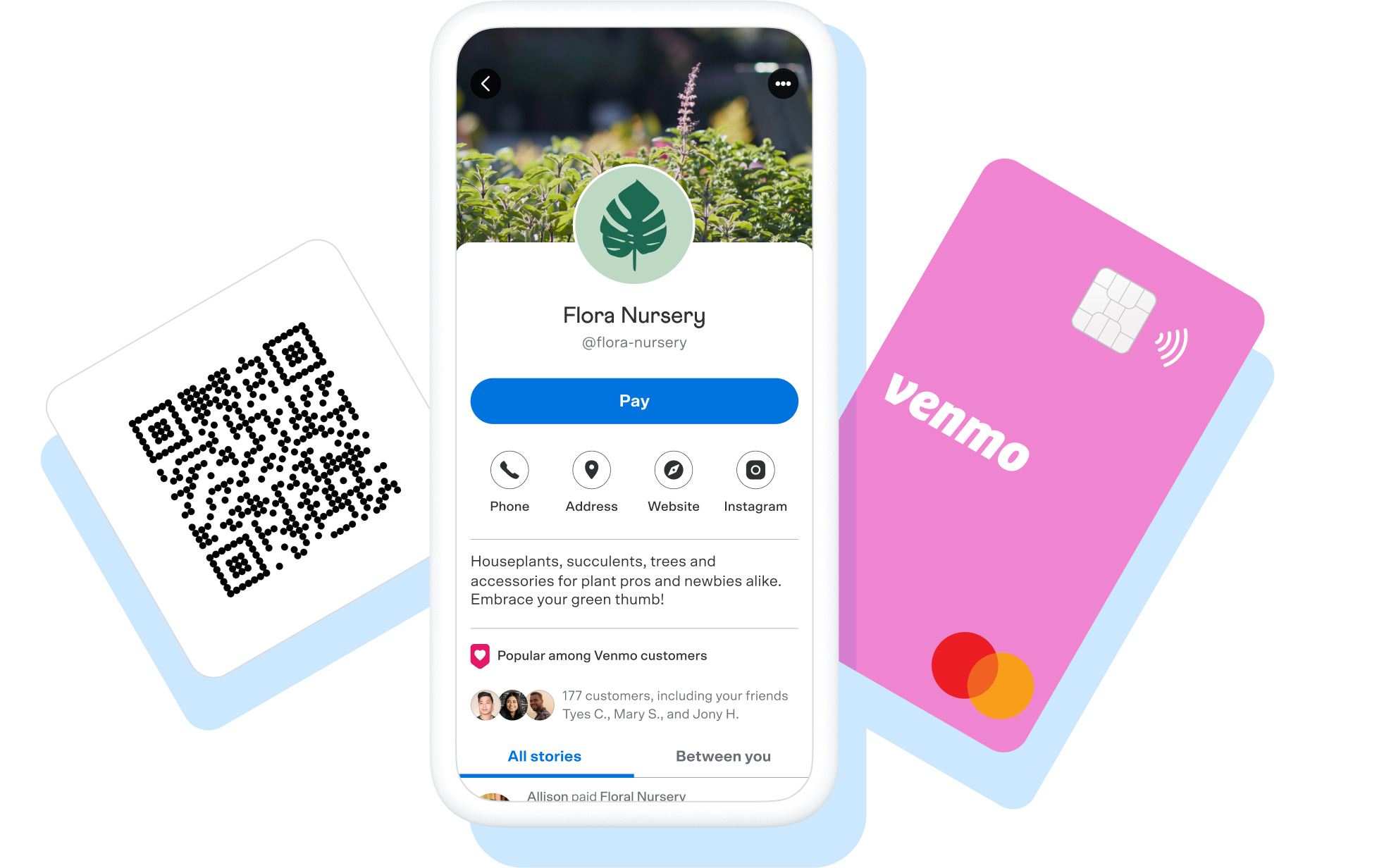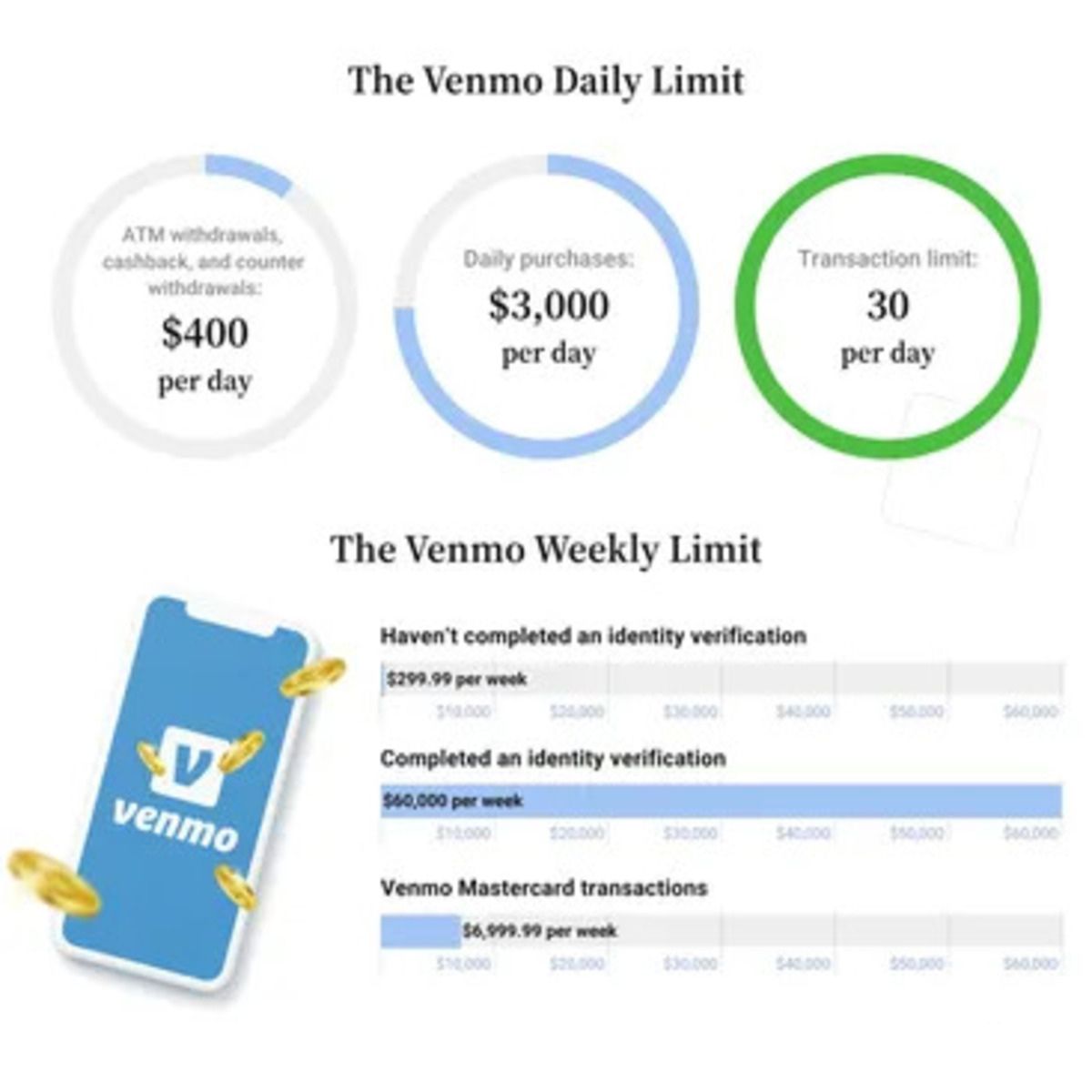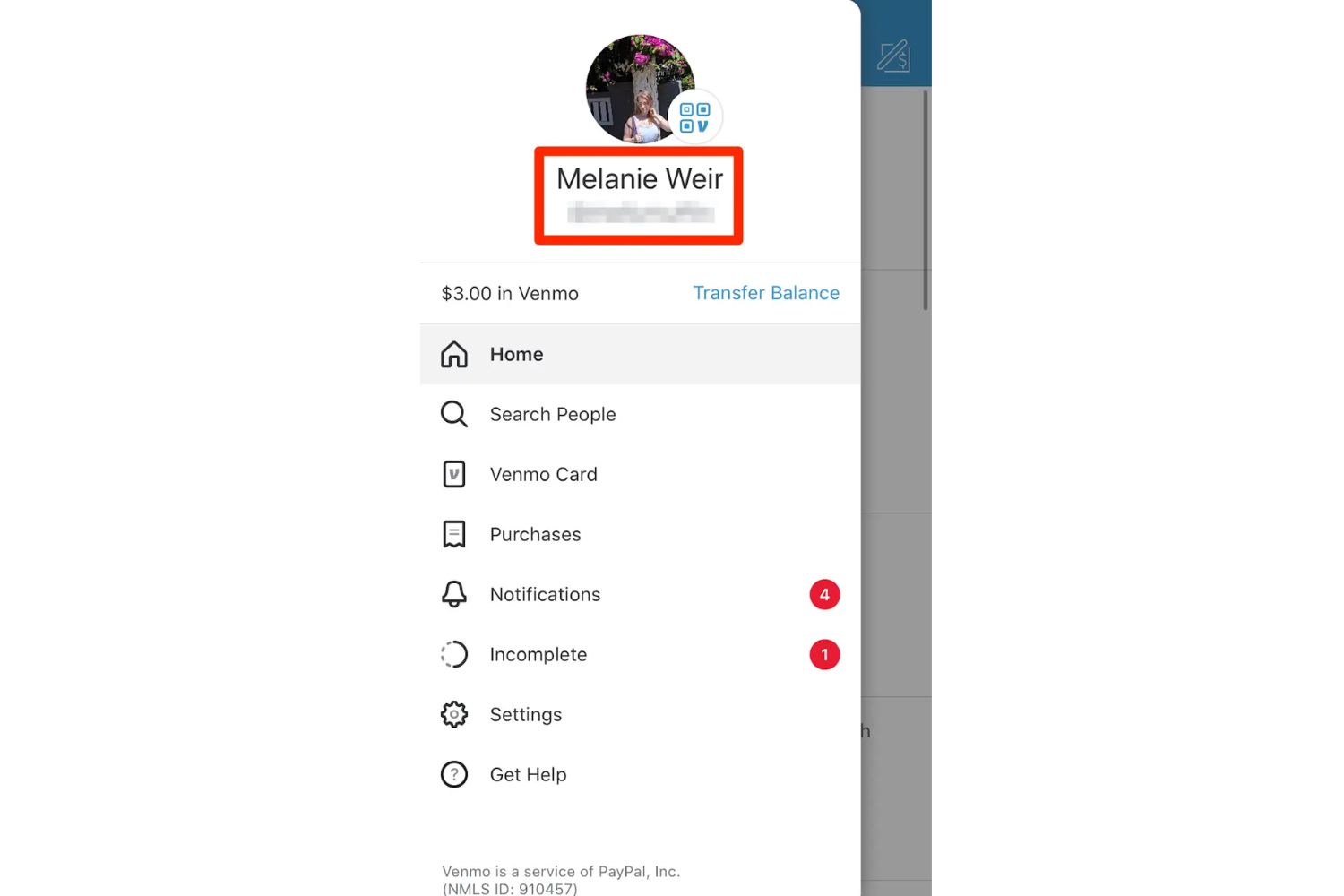Introduction
Venmo, the popular peer-to-peer payment platform, has revolutionized the way we transfer money to friends, family, and even businesses. With its ease of use and convenient features, Venmo has become a go-to choice for many users.
However, like any financial service, Venmo has certain limitations in place to ensure the security and integrity of its platform. Understanding these limits is crucial for users to make informed decisions when sending and receiving money.
In this article, we will delve into the limits imposed by Venmo for personal and business accounts, explore factors that can influence these limits, and discuss strategies to increase your Venmo limits.
By gaining a deeper understanding of Venmo’s limits and how they can be managed, you can utilize the platform to its fullest potential while staying within the boundaries set by the company.
Now, let’s dive into the specific limits that Venmo has put in place for personal and business accounts, and how they impact your ability to send and receive money.
Venmo Limits for Personal Accounts
As a Venmo user with a personal account, you will encounter specific limits when it comes to sending and receiving money. These limits are put in place to manage the risk associated with financial transactions and to comply with regulatory requirements.
Sending Limits:
Venmo sets sending limits for personal accounts, which dictate the maximum amount of money you can transfer within a given period. By default, new Venmo users have a weekly sending limit of $299.99. However, as you build a history of successful transactions and establish trust with the platform, Venmo may increase your sending limit.
It’s important to note that if you want to send more than your current limit, you can request a limit increase directly from Venmo. The company will review your account history and usage patterns to determine if an increase is warranted.
Receiving Limits:
In addition to sending limits, Venmo also imposes receiving limits on personal accounts. Receiving limits determine the maximum amount of money you can receive within a specified time frame. Similar to sending limits, new Venmo users have a weekly receiving limit of $299.99.
As with sending limits, Venmo’s algorithms monitor your account activity and may increase your receiving limit over time. However, if you anticipate receiving a large sum of money that exceeds your current limit, you can also request a limit increase from Venmo.
It’s important to keep in mind that Venmo may require additional verification or documentation for limit increase requests. This is to ensure compliance with legal and security standards, providing a safe environment for all users.
Understanding and managing your sending and receiving limits is essential for using Venmo effectively. By staying within these boundaries, you can navigate the platform with confidence and peace of mind.
Sending Limits
When it comes to sending money through Venmo, understanding the sending limits is crucial to ensure a seamless transaction experience.
Venmo imposes limits on the amount of money you can send within a given timeframe. As mentioned earlier, new Venmo users have a default weekly sending limit of $299.99. This limit is in place to prevent unauthorized or fraudulent transactions.
If you want to send more money than your current limit allows, you can request a sending limit increase directly from Venmo. To do this, navigate to the settings section of your Venmo app, select “Limits,” and choose the option to request a limit increase.
When reviewing your request, Venmo typically considers factors such as your account history, usage patterns, and overall customer trust. The company wants to ensure that any increases are warranted and align with regulatory and security standards.
It’s important to note that Venmo may impose additional verification steps or requirements when processing limit increase requests. This can include providing additional identification documents or proof of income. These measures are implemented to protect users and comply with financial regulations.
Once your request is approved, your sending limit will be increased, granting you the ability to transfer larger amounts of money through the platform.
Keeping an eye on your sending limit is important to prevent any disruption in your money transfers. If you reach or exceed your current sending limit, any further attempts to send money will be declined until the new week begins or your requested limit increase is approved.
By understanding and managing your sending limits on Venmo, you can ensure a smooth and efficient experience when transferring funds to friends, family, or even businesses.
Receiving Limits
Just as Venmo sets sending limits, it also imposes limits on the amount of money you can receive through the platform within a specified time frame. Understanding these receiving limits is important to effectively manage incoming transactions.
For new Venmo users with personal accounts, the default weekly receiving limit is set at $299.99. This means that you can receive up to this amount within a given week. As you establish a history of successful transactions and build trust with Venmo, your receiving limit may gradually increase.
If you anticipate receiving a larger sum of money that exceeds your current limit, Venmo allows you to request a limit increase. Similar to the process of requesting a sending limit increase, you can navigate to the settings section of your Venmo app, select “Limits,” and proceed to request the increase.
Venmo will review your account activity, transaction history, and other relevant factors to determine whether an increase is warranted. The aim is to balance user convenience with security and regulatory compliance.
It’s important to be aware that Venmo may require additional verification or documentation before approving a limit increase request. This can include providing proof of identity, address verification, or other supporting documents. These measures help protect against fraud and ensure a secure environment for all users.
Once your limit increase request is approved, you will be able to receive larger amounts of money through Venmo. This can be particularly useful for receiving payments from freelancing gigs, selling goods or services, or receiving financial support from friends and family.
Monitoring your receiving limit is essential to avoid any disruptions in incoming transactions. If you reach or exceed your current limit, any additional payments or transfers will be declined until the new week begins or your requested limit increase is approved.
By understanding and managing your receiving limits on Venmo, you can seamlessly receive money and conduct transactions within the platform’s boundaries.
Venmo Limits for Business Accounts
Venmo not only caters to personal users but also provides services for businesses through its Business Accounts. These accounts are designed to facilitate transactions between businesses and customers, and they come with their own set of limits and restrictions.
Sending Limits:
Business accounts on Venmo have their own sending limits in place. These limits determine the maximum amount of money a business can send within a given timeframe. By default, new business accounts have a weekly sending limit of $4,999.99.
However, it’s important to note that businesses can request higher sending limits based on their needs. To request a limit increase, business account holders can contact Venmo’s support team and provide relevant information about their business and transaction requirements.
Venmo may request additional documentation or conduct a review to assess the legitimacy and risk factors associated with the business. Once approved, the higher sending limit will allow the business to make larger transactions through the platform.
Receiving Limits:
Similar to sending limits, Venmo enforces receiving limits for business accounts. These limits determine the maximum amount of money a business can receive within a specific time period. By default, new business accounts have a weekly receiving limit of $4,999.99.
If a business expects to receive more money than its current limit allows, it can request a limit increase from Venmo. The process for requesting a receiving limit increase involves contacting Venmo’s support team and providing the necessary documentation or information to support the request.
Venmo may review the business’s operations, financial history, and other relevant factors to determine if an increase in the receiving limit is warranted. Once approved, the business will be able to receive larger payments through Venmo.
It’s important for businesses to remain aware of their sending and receiving limits on Venmo to avoid any disruptions in their transactions. Exceeding the limits can result in declined transactions or temporary holds on the account.
By understanding and managing the limits set for business accounts on Venmo, businesses can conduct transactions smoothly and securely, enhancing their payment capabilities.
Sending Limits
When it comes to sending money through Venmo’s Business Accounts, understanding the sending limits is crucial for businesses to effectively manage their transactions.
Venmo sets sending limits for business accounts to ensure regulatory compliance and mitigate risks associated with financial transactions. By default, new business accounts have a weekly sending limit of $4,999.99.
However, if a business needs to send larger amounts of money, it can request a sending limit increase from Venmo. This can be done by reaching out to Venmo’s support team and providing relevant information about the business and the anticipated transaction volume.
Venmo may require additional documentation or conduct a review to assess the legitimacy and risk factors associated with the business. Once approved, the business will have a higher sending limit, allowing for larger transactions through the platform.
It’s important to note that Venmo may impose certain limitations on the frequency and size of individual transactions, even if the total amount remains within the sending limit. This is done to protect against fraud and maintain the integrity of the platform.
Businesses should keep track of their sending limit to avoid any disruptions in their transactions. If a business reaches or exceeds its current sending limit, any further attempts to send money will be declined until the new week begins or the requested limit increase is approved.
Monitoring and managing sending limits effectively can enable businesses to efficiently transfer funds to suppliers, vendors, and partners, supporting their day-to-day operations and financial activities.
By understanding the sending limits for business accounts on Venmo and utilizing the option to request an increase when necessary, businesses can make the most of the platform’s capabilities while staying within the established boundaries.
Receiving Limits
Venmo Business Accounts also have specific limits for receiving money, which businesses must be aware of to effectively manage their incoming transactions.
By default, new business accounts on Venmo have a weekly limit on the amount of money they can receive. This receiving limit is set at $4,999.99 per week. This limit applies to the total amount of money the business can receive within the specified time frame.
If a business anticipates receiving amounts that exceed the current limit, it can request a receiving limit increase from Venmo. To do this, the business can contact Venmo’s support team and provide the necessary documentation or information to support the request.
Venmo may review the business’s operations, transaction history, and other relevant factors to assess the legitimacy and risk associated with the increase in receiving limit. Once approved, the business will be able to receive larger payments through Venmo.
It’s important for businesses to keep track of their receiving limit and ensure that they do not exceed it. If a business reaches or surpasses its current receiving limit, any additional incoming transactions will be declined until the new week begins or the requested limit increase is approved.
Businesses should also be aware that Venmo may impose additional restrictions on the frequency and size of individual transactions, even if the total amount received is within the receiving limit. This is done to prevent fraud and maintain the security of the platform.
By understanding and managing the receiving limits for Venmo Business Accounts, businesses can seamlessly receive payments from suppliers, customers, and clients. This allows them to efficiently manage their finances and support their day-to-day operations.
It’s important for businesses to stay within their receiving limits, as exceeding them can result in transaction disruptions and potential holds on the account. By being mindful of these limits and utilizing the option to request an increase when necessary, businesses can optimize their financial operations through Venmo.
Factors That Can Affect Your Venmo Limits
When it comes to Venmo limits, several factors can influence the amount of money you can send and receive through the platform. It’s essential to understand these factors to effectively manage your transaction capabilities and navigate the Venmo ecosystem.
Account History:
Your Venmo account history plays a significant role in determining your limits. Venmo considers factors such as the length of time you’ve been using the platform, your transaction history, and the overall activity on your account. Having a positive account history with successful and consistent transactions can potentially lead to higher limits.
Verification Information:
Venmo may require you to provide additional identity verification information to increase your limits. This can include verifying your phone number, email address, or linking your Venmo account to a verified bank account. Adding and verifying this information adds an extra layer of security and can help establish trust with the platform, potentially leading to higher limits.
Compliance and Regulatory Requirements:
Venmo, like any financial service provider, operates within the boundaries of relevant regulations. Your limits may be influenced by compliance requirements set forth by regulatory bodies. Venmo has to ensure that it follows these regulations to prevent money laundering, fraud, and other illicit activities.
Customer Support Interaction:
Your interactions and communication with Venmo’s customer support team can impact your limits. If you contact customer support for assistance, their assessment of your account and any issues you encounter can influence their decision to increase or adjust your limits accordingly.
Transaction Patterns:
Venmo analyzes your transaction patterns to assess risk and determine appropriate limits. Unusually large or frequent transactions, particularly if they deviate from your usual spending habits, may trigger further scrutiny or even temporary limitations on your account until the transactions can be verified.
Business Verification:
For Venmo Business Accounts, additional factors come into play. Businesses are typically required to provide documentation to verify their legitimacy and operation. The information provided might include business licenses, tax identification numbers, proof of address, and financial documents. The accuracy and completeness of these documents can directly affect the limits placed on the business account.
It’s important to note that Venmo’s limits are dynamic and subject to change. The company regularly reviews user accounts and adjusts limits based on various factors, such as account activity, transaction history, and compliance requirements.
By understanding and considering these factors, you can proactively manage your Venmo limits and enjoy the full benefits of the platform while staying within the set boundaries.
How to Increase Your Venmo Limits
If you find that your current Venmo limits are restricting your ability to send and receive the desired amount of money, there are steps you can take to potentially increase those limits. Here’s how to go about it:
1. Verify Your Identity: Ensure that your Venmo account is fully verified. This includes providing accurate personal information, verifying your email address and phone number, and linking your bank account. Verifying your identity adds credibility to your account and may increase your limits.
2. Build a Positive Account History: Consistently use Venmo for transactions and establish a positive account history. This means making regular payments, receiving funds, and maintaining a good transaction track record. Venmo takes account history into consideration when determining limits.
3. Communicate with Customer Support: If you believe your current Venmo limits are hindering your usage, reach out to Venmo’s customer support. Explain your situation and provide any necessary documentation to support your case. Customer support can review your account and potentially make adjustments to your limits.
4. Gradually Increase Transactions: Start with smaller transactions and gradually increase the size and frequency. By demonstrating responsible financial behavior and gradually scaling up your transactions, Venmo may recognize your trustworthiness and adjust your limits accordingly.
5. Provide Business Verification Documents: For Venmo Business Accounts, ensure that you have provided all necessary business verification documents. This may include business licenses, tax identification numbers, and other relevant information. Submitting accurate and complete documentation can help increase your business account limits.
6. Request a Limit Increase: Venmo provides an option to request a limit increase directly within the app. Navigate to your Venmo account settings, find the “Limits” section, and follow the instructions to submit a limit increase request. Be prepared to provide additional information or documentation if requested.
7. Maintain a Positive Transaction history: It’s crucial to maintain a positive transaction history, free from disputes, chargebacks, or fraudulent activities. Consistently engaging in reputable transactions helps build trust with Venmo and increases the chances of being granted higher limits.
It’s important to note that while following these steps increases the likelihood of getting higher limits, Venmo’s decision to adjust limits ultimately depends on various factors and is at their discretion.
By taking these proactive measures and demonstrating responsible financial behavior, you can potentially increase your Venmo limits, allowing for more flexibility in your transactions and financial activities.
Conclusion
Venmo’s limits for personal and business accounts play a crucial role in managing the risks associated with financial transactions while ensuring compliance with regulatory requirements. Understanding these limits and how they can be influenced is essential for effectively managing your Venmo experience.
For personal accounts, there are limits on both sending and receiving money. New users start with default weekly limits, but these can be increased over time based on account history and user trust. Requesting limit increases can also be an option if you need to send or receive larger amounts of money.
Business accounts on Venmo have separate limits for sending and receiving, with the ability to request higher limits as well. By verifying your identity, building a positive account history, and providing necessary business verification documents, businesses can enhance their transaction capabilities through Venmo.
Various factors, such as account history, verification information, compliance and regulatory requirements, customer support interaction, and transaction patterns, can influence your Venmo limits. Being aware of these factors allows you to proactively manage and navigate within the boundaries of Venmo’s limits.
If you find that your current limits are restricting your transactions, you can take steps to potentially increase them. Verifying your identity, building a positive account history, communicating with customer support, gradually increasing transactions, submitting necessary business verification documents, and requesting a limit increase are all strategies to explore.
It’s important to remember that Venmo’s limits are subject to change and review. The company regularly evaluates user accounts and adjusts limits based on various factors. By understanding the limitations and taking proactive measures to manage and potentially increase your Venmo limits, you can make the most of the platform’s capabilities while maintaining a secure and seamless transaction experience.
Now that you have a comprehensive understanding of Venmo’s limits and how to work within them, you can confidently navigate the platform and make convenient and secure money transfers with ease. Take advantage of the potential to increase your limits as you build a trustworthy account history and enjoy all the benefits that Venmo has to offer.

























